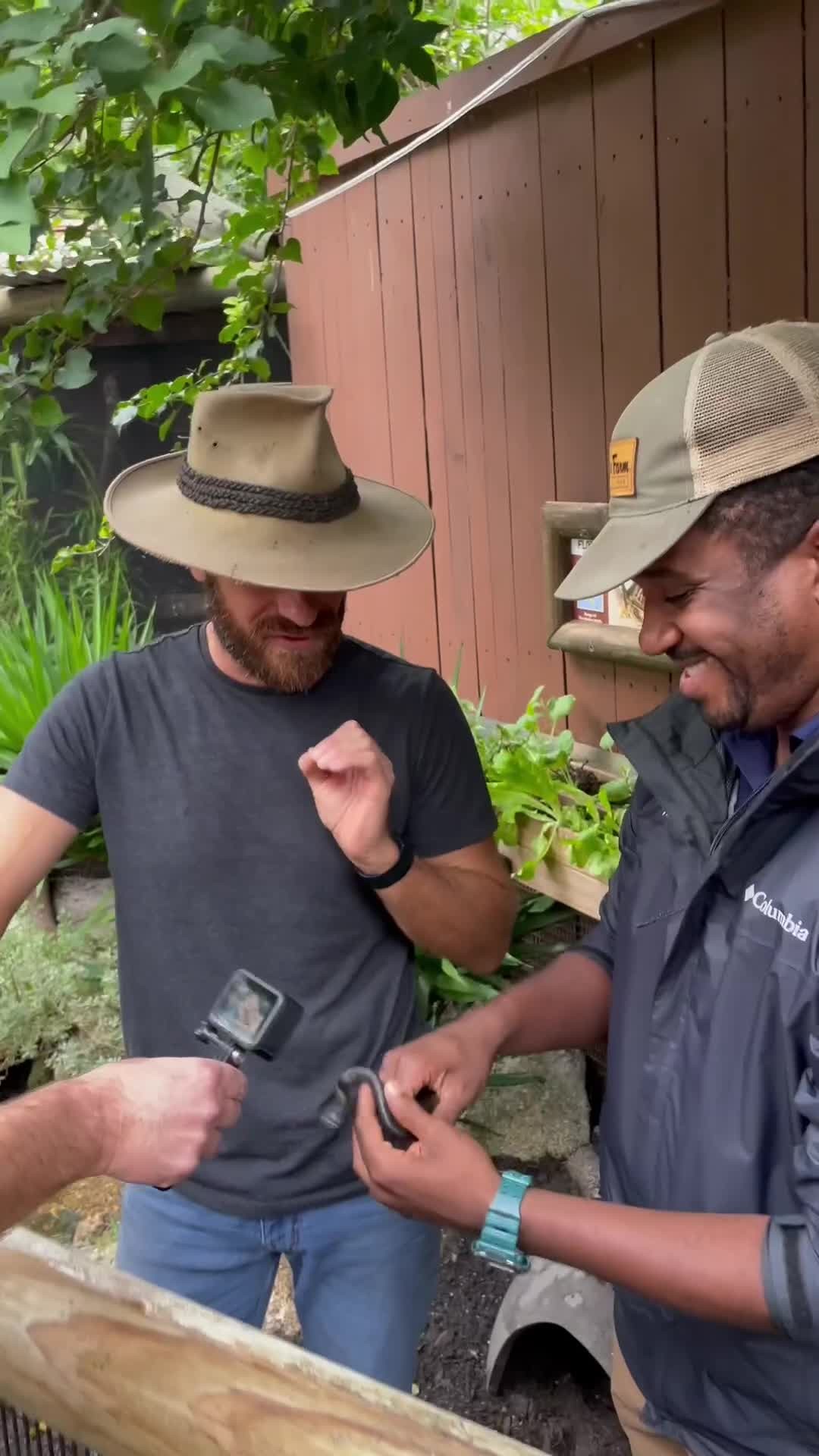– Discovering the charm of the enigmatic Baby Eastern Indigo Snake
– Insights into the life of one of North America’s largest native snake species
– The integral role of the Eastern Indigo Snake in ecosystem balance and biodiversity
– Efforts and strides in the conservation of these majestic reptiles
– A glimpse into the educational outreach led by wildlife enthusiasts
Imagine stepping into a world where slithering grace meets majestic presence; this is the domain of the Baby Eastern Indigo Snake. These creatures may be the offspring of North America’s longest native serpent. Still, their story is about more than just size—it’s a tale woven with ecological significance, conservation passion, and natural wonder.
In a recent visit that sparked the curiosity of reptile specialists and laypersons alike, *Kamp Kenan*, a haven for reptile enthusiasts, revealed the fascinating life of Baby Eastern Indigo Snakes. Let’s follow the journey of these serpents from hatchlings to the kings of camouflage they are destined to become, guided by Trevor, the zealous Education Curator who generously shares his knowledge.
The Eastern Indigo Snake (Drymarchon couperi) is a sight to behold. The indigo snake has an almost mythical appearance and is swathed in iridescent blues and blacks. It’s not just their striking color that sets them apart but also their docile demeanor, which belies their formidable size and strength.
Born in the wild, the young indigos emerge from their eggs measuring a mere foot in length, yet these hatchlings will one day stretch up to 8.5 feet, commanding awe and respect from onlookers. Despite their daunting size, these constrictors are non-venomous and pose little threat to humans, preferring the taste of small mammals, birds, and even other reptiles over human interaction.
One of the most mesmerizing aspects of the Baby Eastern Indigo’s life is its early independence. Unlike certain mammals or birds, these snakes are solitary from birth and possess an instinct to fend for themselves. This includes hunting skills and defensive behavior crucial for survival in their diverse habitats that range from pine flatwoods to sandy coastal plains.
What truly sets the Baby Eastern Indigo apart is its ecological role. Recognized as a keystone species, these snakes contribute significantly to maintaining a balanced ecosystem. They’re not just predators but also guardians of balance, preying on invasive species and thus controlling overpopulation and disease transmission among their prey.
This self-sustaining lifestyle, however, is precisely what positions the indigo snake at the intersection of admiration and concern. The Eastern Indigo Snake is currently listed as a threatened species, largely due to habitat loss, road mortality, and prey base depletion. Efforts to preserve the species, like those led by *The Alligator Farm’s SAFE (Saving Animals From Extinction) Program*, provide a beacon of hope for a future where these snakes can thrive without the looming threat of extinction.
Education initiatives play a pivotal role in the conservation efforts of indigos. By fostering appreciation and understanding through interactive experiences, educators like Trevor at *Kamp Kenan* dispel myths, shed light on the significance of reptiles in our world, and encourage a unity of purpose.
But why should we, as humans, care about Baby Eastern Indigo Snakes or any wild species? It circles back to the indelible link between these magnificent reptiles and the health of our environment. Their quiet daily work, managing rodent populations, quells potential agricultural pests and diseases that could affect our food systems and health.
An encounter with the Baby Eastern Indigo Snakes mirrors our inherent connection with nature. Each careful examination of their patterns, each observation of their growth, reminds us of the marvels of natural engineering and evolution. They inspire us to pause and appreciate the less-noticed inhabitants of our planet, which contribute profoundly to the world’s complexity and beauty.
The preservation of the Baby Eastern Indigo and its habitat champions the cause of biodiversity, which, in the grandest of schemes, determines the resilience of ecosystems to change. By protecting them, we, in turn, are safeguarding the ecosystems vital to our survival.
Thinking of the adventure ahead for a hatchling Eastern Indigo Snake is exhilarating. From eluding predators and braving the elements to eventually becoming an emblematic figure of the vital cycle of their habitat, their story is one of resilience and adaptability. It’s this very resilience that conservationists aim to bolster, ensuring that these majestic snakes continue to weave their way through the tapestry of North America’s wildlife narrative.
In conclusion, the existence of the Baby Eastern Indigo Snakes is an enduring testament to the wonder that continues to thrive in overlooked corners of our world. Their silent journey prompts us to listen closer, look deeper, and act with conviction to preserve the delicate thrum of life that vibrates beneath our feet. In their survival, we find a reflection of our persistent strive for balance in a world constantly in flux.
As we continue to uncover the layers composing the Baby Eastern Indigo Snakes story, we celebrate their place in the wild. Through dedicated conservation, passionate educators, and collective action, we can script a future where these extraordinary creatures glide freely through their native lands, a hidden but essential wonder within the great tapestry of life.
*****
Source Description
Baby Indigo Snakes! Kamp Kenan stops by to check out the new Baby Eastern Indigo Snakes and chats with Trevor, the Education Curator.
Watch the Full Video here: https://youtu.be/j4Yua158RAc?si=NtniPEqJA5DH39XE.
Learn more about Eastern Indigo Snake Conservation: https://www.alligatorfarm.com/conservation-research/safe-program/
(Find the links on our Facebook, YouTube, and Stories)


